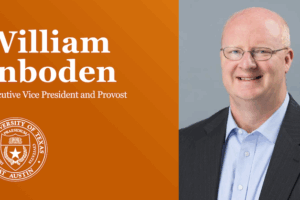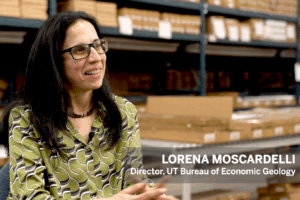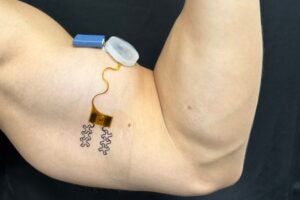AUSTIN, Texas—University of Texas at Austin Environmental Engineering Professor Richard Corsi has received a $1 million contract from a federal agency to study the physical and chemical interactions that occur between three airborne decontaminants and the surfaces they encounter in buildings.
Corsi’s team will initially study three very different decontamination agents: chlorine dioxide and ozone (both highly chemically reactive substances used in some water purification systems) and methyl bromide (widely employed to exterminate termites, it is chemically stable but may persist in buildings following its application, because it soaks into porous materials). The researchers will determine the behavior of each in the presence of 24 materials found extensively indoors. The materials include wallboard, carpet, vinyl and linoleum floor tiles, several wood products, metal, fabrics and even paper.
When anthrax attacks forced closure and decontamination of several large public buildings—including the Hart Senate Building in Washington, D.C.—the then-unfamiliar nature of the threat forced quick responses based on little experience and cost hundreds of millions of dollars.
Results of the study will be incorporated into a software package that can be used by the U.S. Department of Defense, the U.S. Environmental Protection Agency, local and state health departments, consultants and others.
“They’ll be able to plug in figures for how much gypsum board, how much linoleum, how much and what kind of carpeting exists in a room,” Corsi said, “and based on that, get numbers for the correct decontaminant to apply, at what concentration, and for how long.”
At a specially designed laboratory facility on the university’s J.J. Pickle Research Campus, researchers are conducting experiments with disinfectant/material pairs to determine, for each pair:
- How fast a decontaminant reacts with various material surfaces, and how it changes the reactivity of the materials themselves.
- What building disinfectant byproducts are formed.
- How long the building disinfectant byproducts remain present as a residue.
Their studies do not deal with the actual killing power of the disinfectants, and no anthrax spores or other bio-toxins are involved. The project is confined to discovering how long a given decontaminant remains active under varying conditions, and what, if any, byproducts remain behind.
The former will help in the design of effective building disinfection systems. For example, two otherwise identical buildings with different indoor materials may require very different rates of disinfectant injection to maintain the disinfectant levels necessary to properly treat a building, Corsi said. This is because the differences in interior building materials will affect the rates of disinfectant consumption at material surfaces. The issue of byproduct formation is also of great interest to Corsi.
What chemicals are being formed, and how much of each? How long will they stick around in the building, and how might this influence re-occupation of the building? Will disinfectants or their byproducts cause the breakdown of, say, components inside of computers or other costly electronic equipment, which can’t be removed because they have to be decontaminated too? These are some of the questions he intends to answer.
“The U.S. Environmental Protection Agency and remediation consultants,” Corsi said, “will be able to use our data—along with knowledge of specific buildings—to design effective, less costly disinfection systems. Our results will also assist them with re-entry planning.
“We would hope the product of our research will never have to be used. But it will be available, should it ever be needed.”
Other members of Dr. Corsi’s team include Dr. Dustin Poppendieck (research engineer); Anna Iwasinska and Nadine Gordon (research chemists); Heidi Hubbard (graduate student); fellow Civil Engineering professors Dr. Lynn Katz and Dr. Howard Liljestrand. Dr. Charles Wechsler, a world-renowned expert on indoor air chemistry and adjunct professor at Rutgers University and the Danish Technical University, is a technical adviser on the project. Austin-based Sage Risk Solutions is designing and developing the database software.
For more information contact: Becky Rische, College of Engineering, 512-471-7272.



